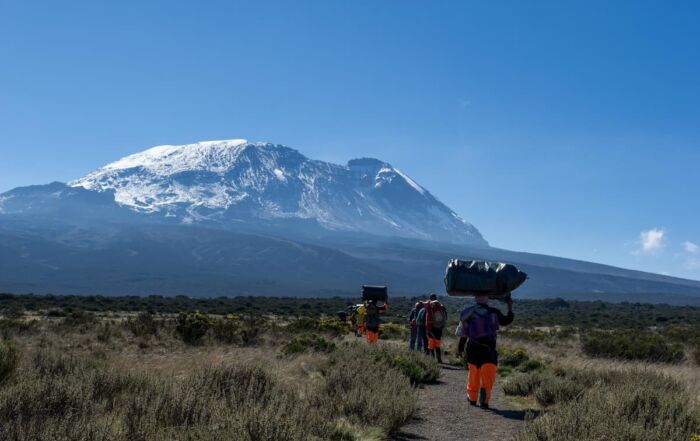A climb up Kilimanjaro isn’t just a physical challenge; it’s a botany lesson. As you travel through the various climate zones, the flora changes dramatically, from fields of coffee in the foothills to tiny patches of the hardiest lichens near the top. Along the way, hundreds of plant species flourish in Kili’s volcanic soil, and some of them—like the towering giant groundsels—have adapted specifically to the increasingly harsh environment at higher elevations.
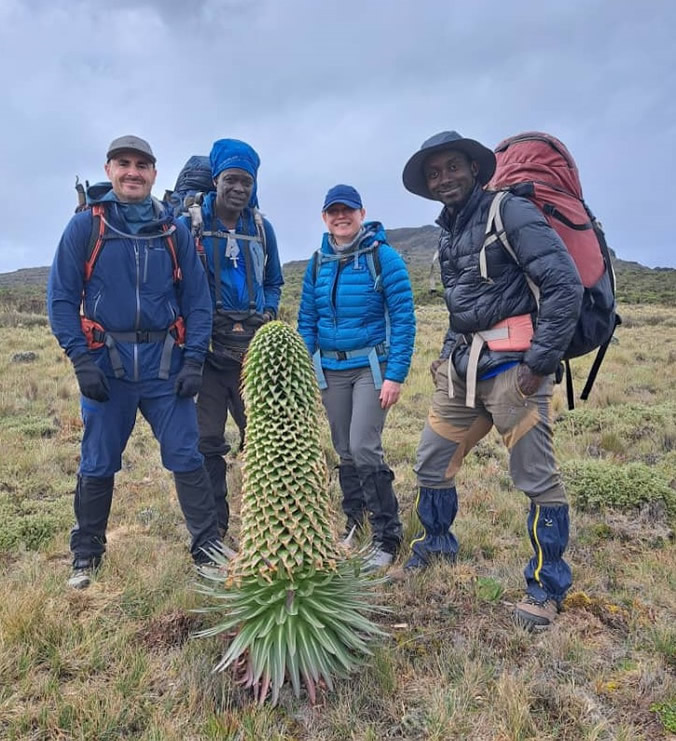
Everlasting Flowers: The Hardy Helichrysum
One of the hardiest of these floral trekkers is the Helichrysum family of flowers, more commonly known as everlasting flowers. Why such an impressive title? They’re the highest flowering plant on the mountain, reaching elevations of around 15,000 feet, where the majority of their near neighbours are small, scraggly shrubs, and the alien-looking groundsels that tower overhead, covered in the withered leaves of years past.
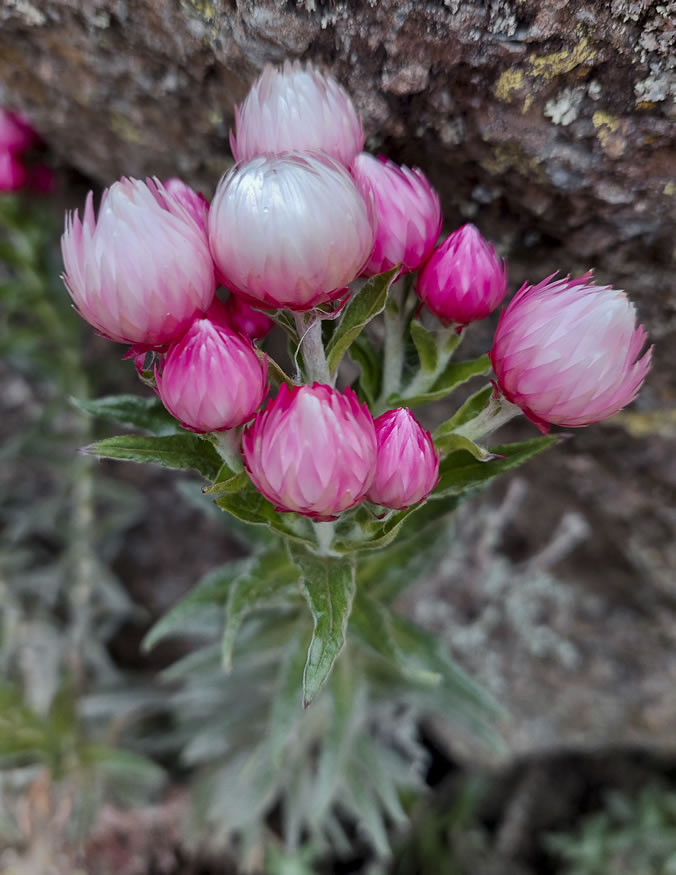
Helichrysium meyeri johannes, Everlasting
– Image by Head guide Godwin Makwaia
The plants may look pretty, but make no mistake: these are no wilting lilies. A stiff, dry structure helps the everlastings survive the scant moisture and frosty nights on the heath and moorlands, and intricately overlapping petals snap closed at night, further protecting the plant against both cold and water loss. This tenacity makes the flowers a wonderful symbol of a successful trek, which is probably why for years, trekkers would be greeted upon their descent with a necklace woven from these flowers.
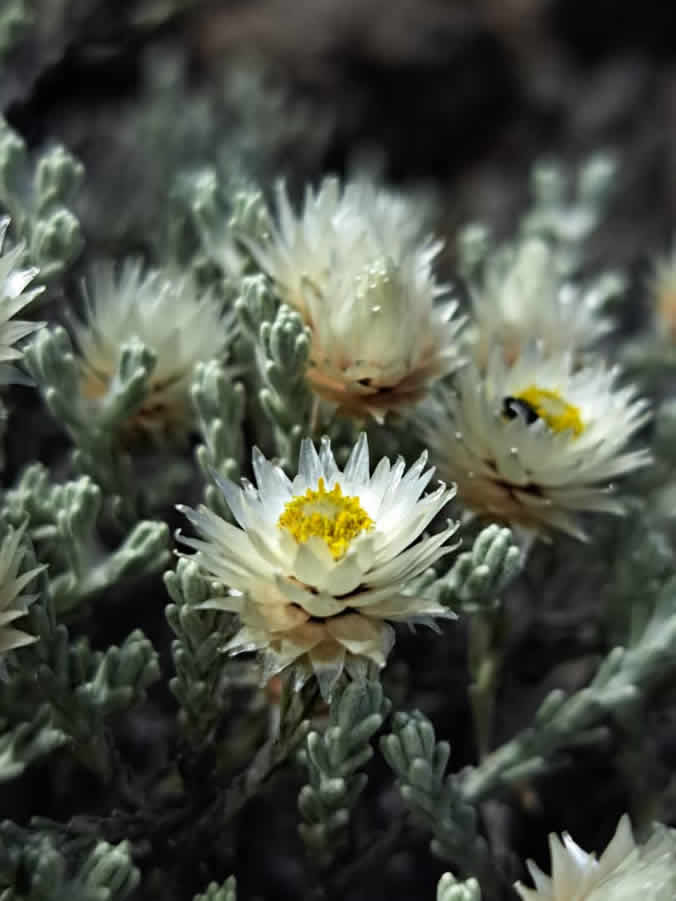
Image by Head guide Godwin Makwaia
Notable Flora Along the Trek
Lobelia Deckenii
Lobelia deckenii is a giant lobelia found only in the high mountains of East Africa, between 12,000 to 15,000 feet. These plants grow up to 10 feet high, have hollow stems, and tall flower-like spikes. This plant has an incredible ability to combat cold. It closes its leaves at night to protect its central core. Leaf rosettes around the stem hold reservoirs of water that freeze into cubicles every night, further protecting the core of the plant.
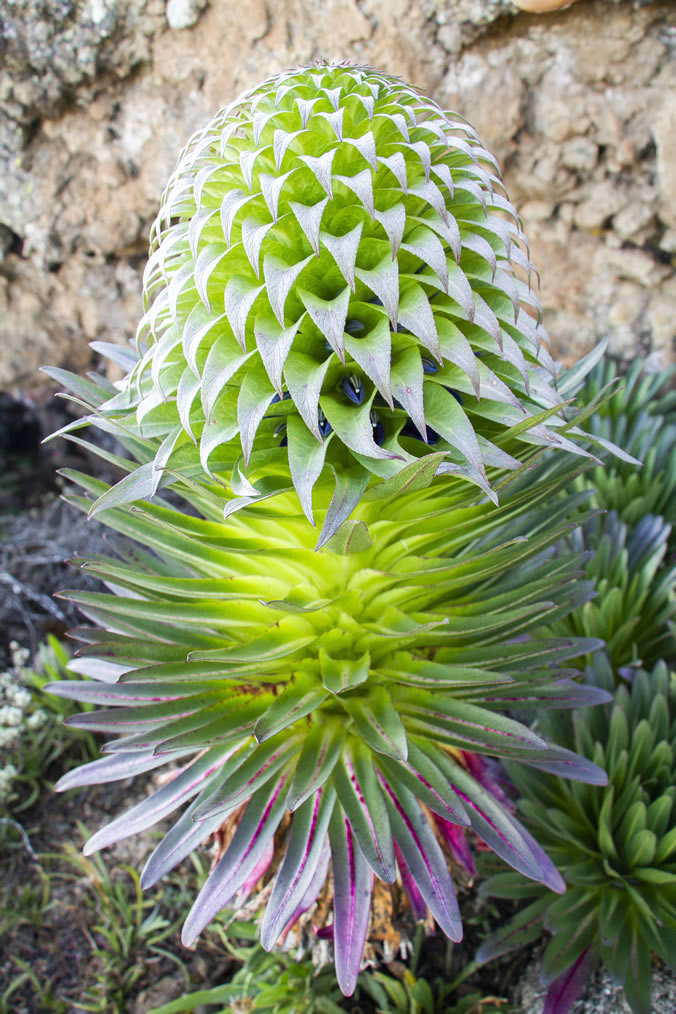
Giant Lobelia dekenii
– Image by Annemarie Porter
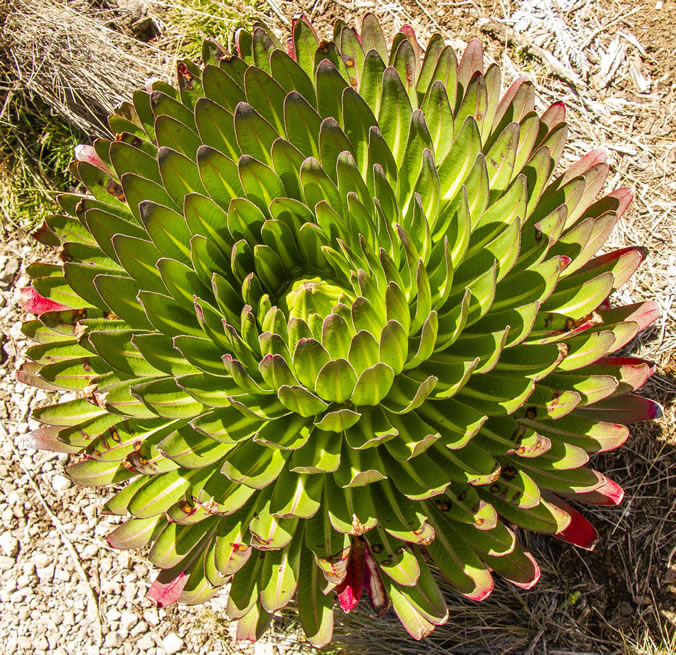
Giant Lobelia dekenii – Image by Annemarie Porter
Giant Groundsels
The Giant Groundsel (Dendrosenecio kilimanjari) is a species of the Senecio genus, found predominantly in the alpine zones of Mount Kilimanjaro. This plant is unique for its otherworldly appearance and impressive adaptability
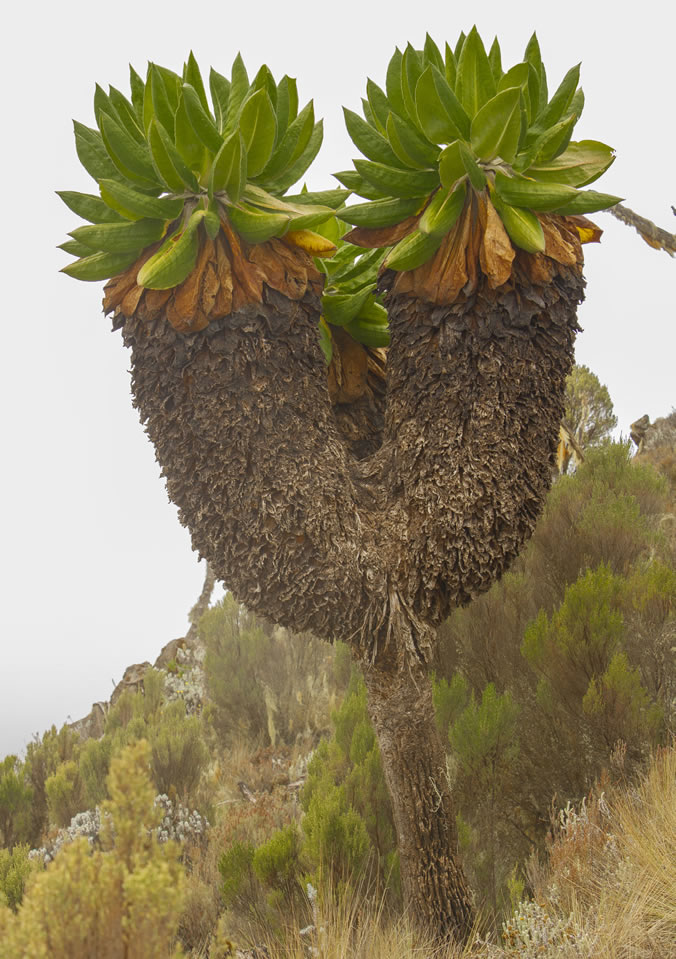
The Giant Groundsel (Dendrosenecio kilimanjari)
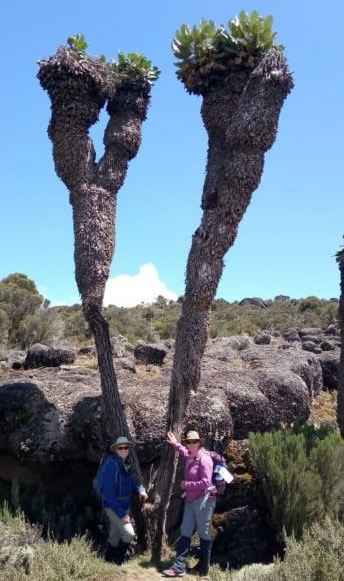
The Giant Groundsel (Dendrosenecio kilimanjari)
Proteas
Proteas were named after the Greek god Proteus, son of Poseidon, who had the ability to transform himself into many different shapes. These plants are known for their unusually shaped, delicate flowers. Protea kilimandscharica is found in the heath ecological zone on Mount Kilimanjaro. Also called sugarbushes, proteas are considered to be among the oldest of flowering plants.
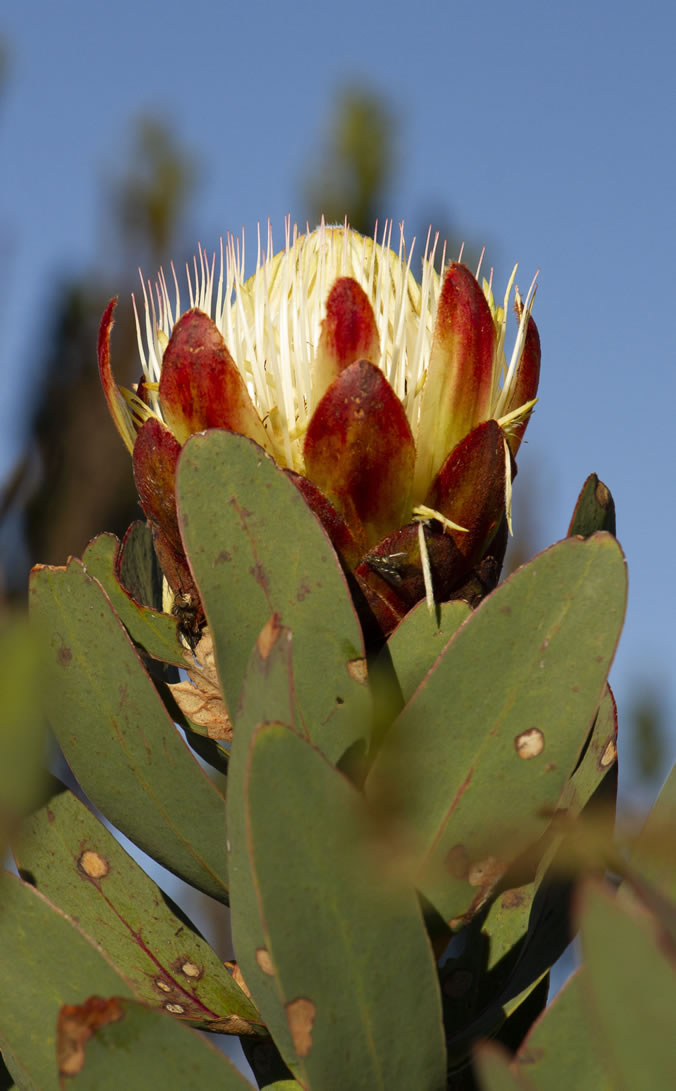
Protea Kilimanjarica – Images by Annemarie Porter
Red Hot Poker
The red hot poker, also known as a torch lily, is a showy and dramatic plant. A member of the Liliaceae family, these drought and heat-tolerant perennials flourish in the arid areas of Mount Kilimanjaro. The flowers are a bright orange and yellow, resembling blazing hot metal that has been removed from a forge.
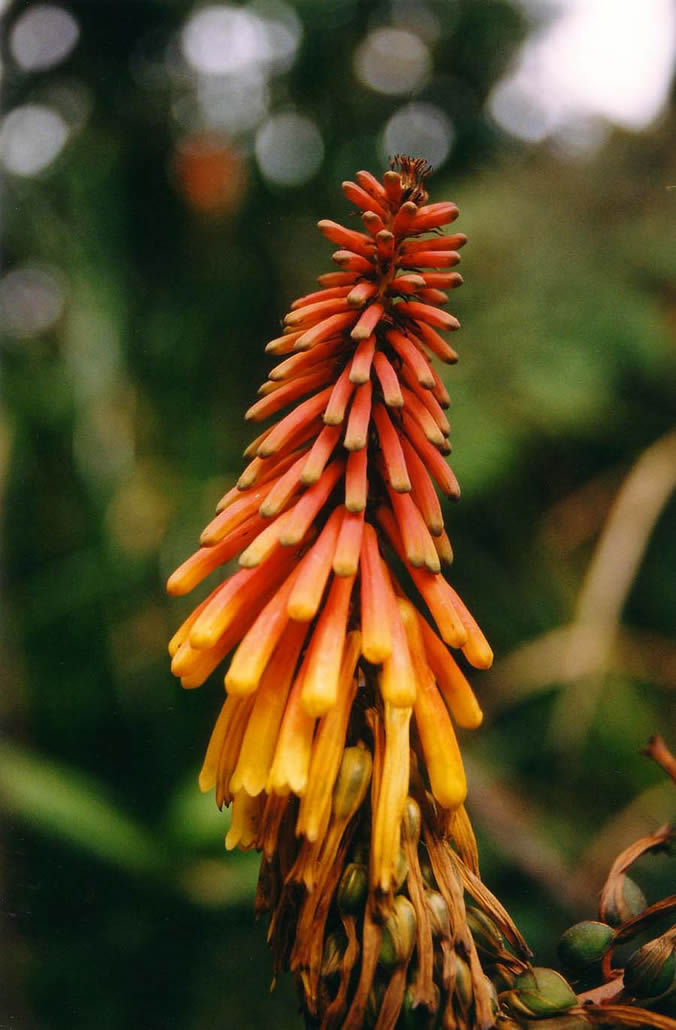
Red Hot Poker
Gladiolus Watsonioides
Gladiolus watsonioides is a medium to high (½–1 m) herbaceous geophyte with sword-shaped leaves, flattened in the plane of the stem, and spikes of red funnel-shaped flowers. This species is restricted to the highlands of central Kenya and northern Tanzania, including Kilimanjaro.
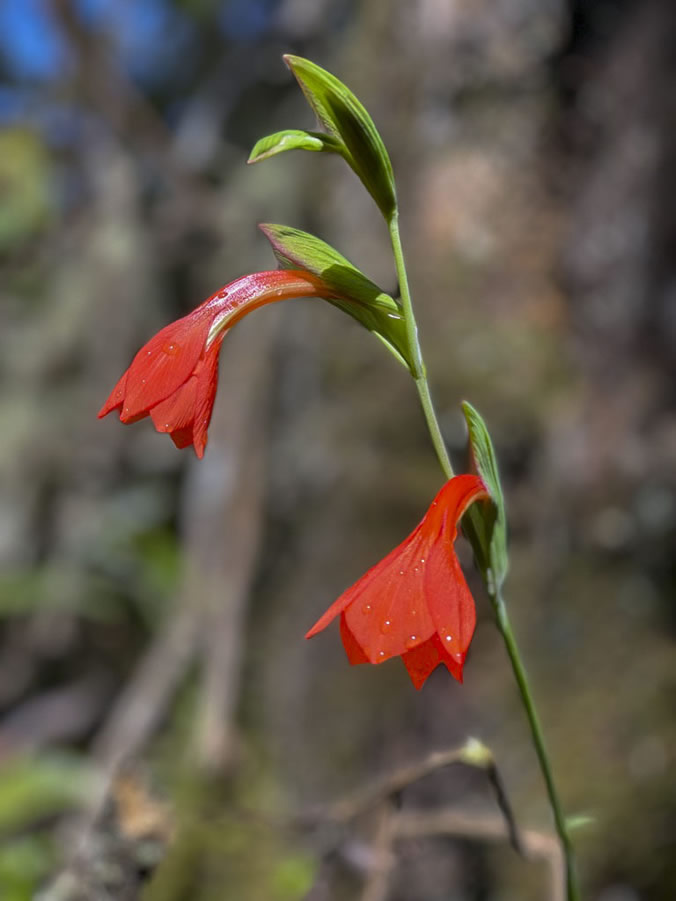
Gladiolus watsonioides
Kilimanjaro Impatiens
If you hike through the rainforests of Mt. Kilimanjaro you might come across this enchanting gem. The Kilimanjaro Impatiens (Impatiens kilimanjari) is found nowhere else in the world except the jungle floor of Kilimanjaro. What the inch-long flowers lack in size, they make up for in eye-catching color and form. The orchid-like hood is a vibrant pinkish-red, blending into a curved, yellow tail. Inside the hood are a series of yellow and red markings. When the blooms are in the male stage, the stamens and pollen are a gorgeous purple. These flowers capture the energy and spirit of the rainforest.
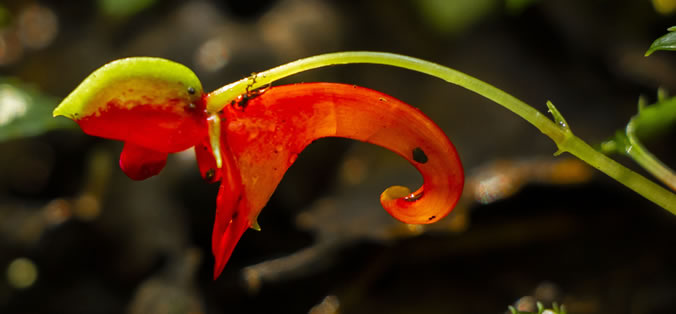
Kilimanjaro Impatiens
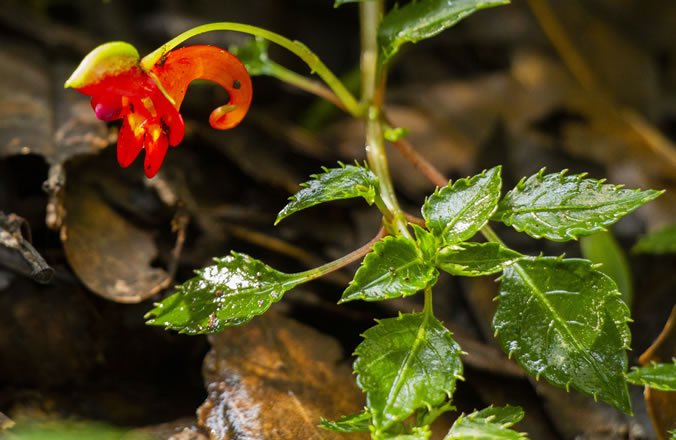
Kilimanjaro Impatiens
Mount Kilimanjaro’s flora is as diverse and fascinating as the mountain itself. From the hardy everlasting flowers to the unique Kilimanjaro Impatiens, the plant life on this iconic peak offers a rich and rewarding experience for botanists and adventurers alike. Each step on the journey up Kilimanjaro is not just a physical challenge but a passage through different botanical worlds, each with its own unique beauty and resilience.
Book Your Kilimanjaro Trek Today!
Embark on the extraordinary journey of a lifetime with Nature Discovery, where you can discover the flora of Kilimanjaro. Experience how the mountain’s challenges transform into triumphs, and every step leads to new heights of accomplishment.
Contact us to help you plan your Kilimanjaro trek.
Booking is essential and our tours are popular, so contact us now to avoid disappointment.


